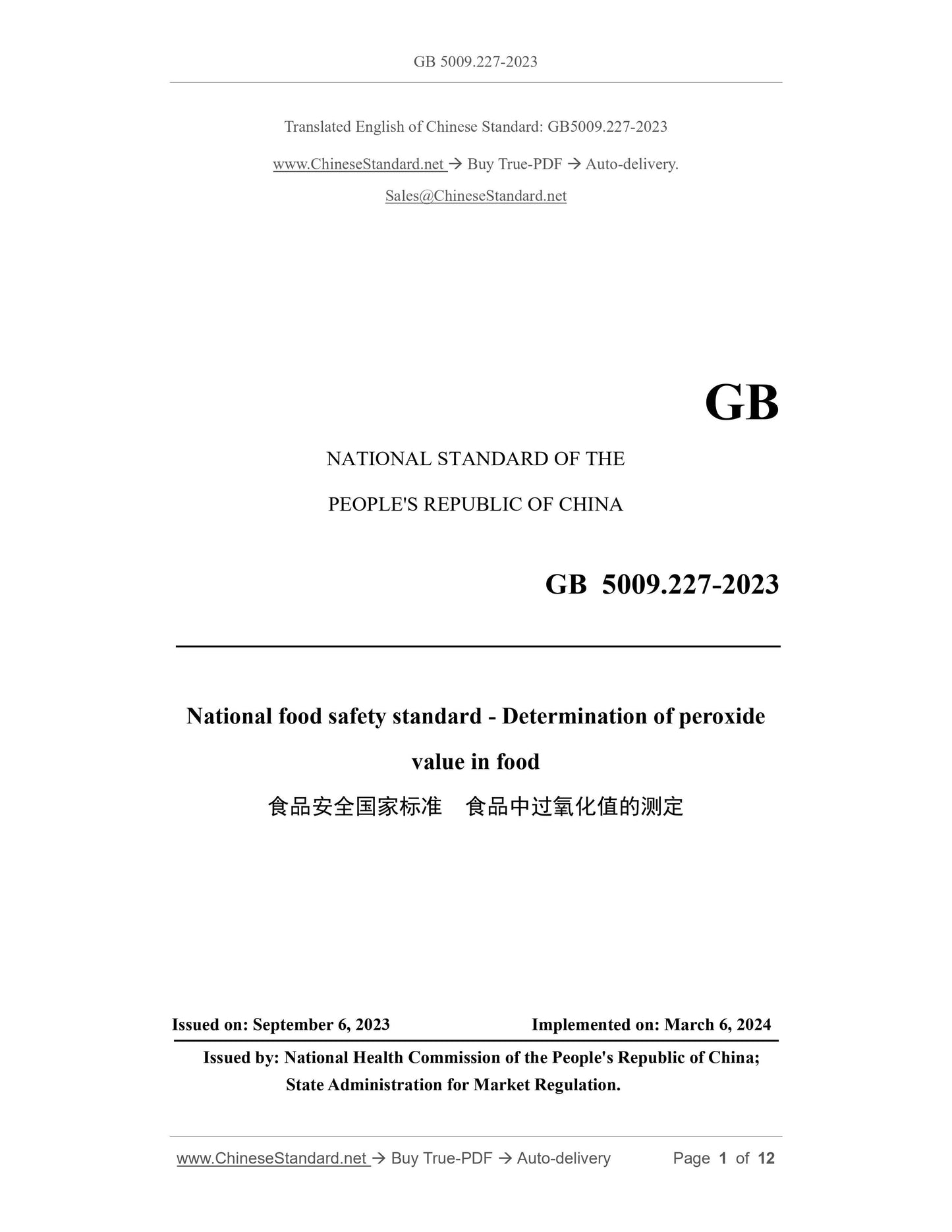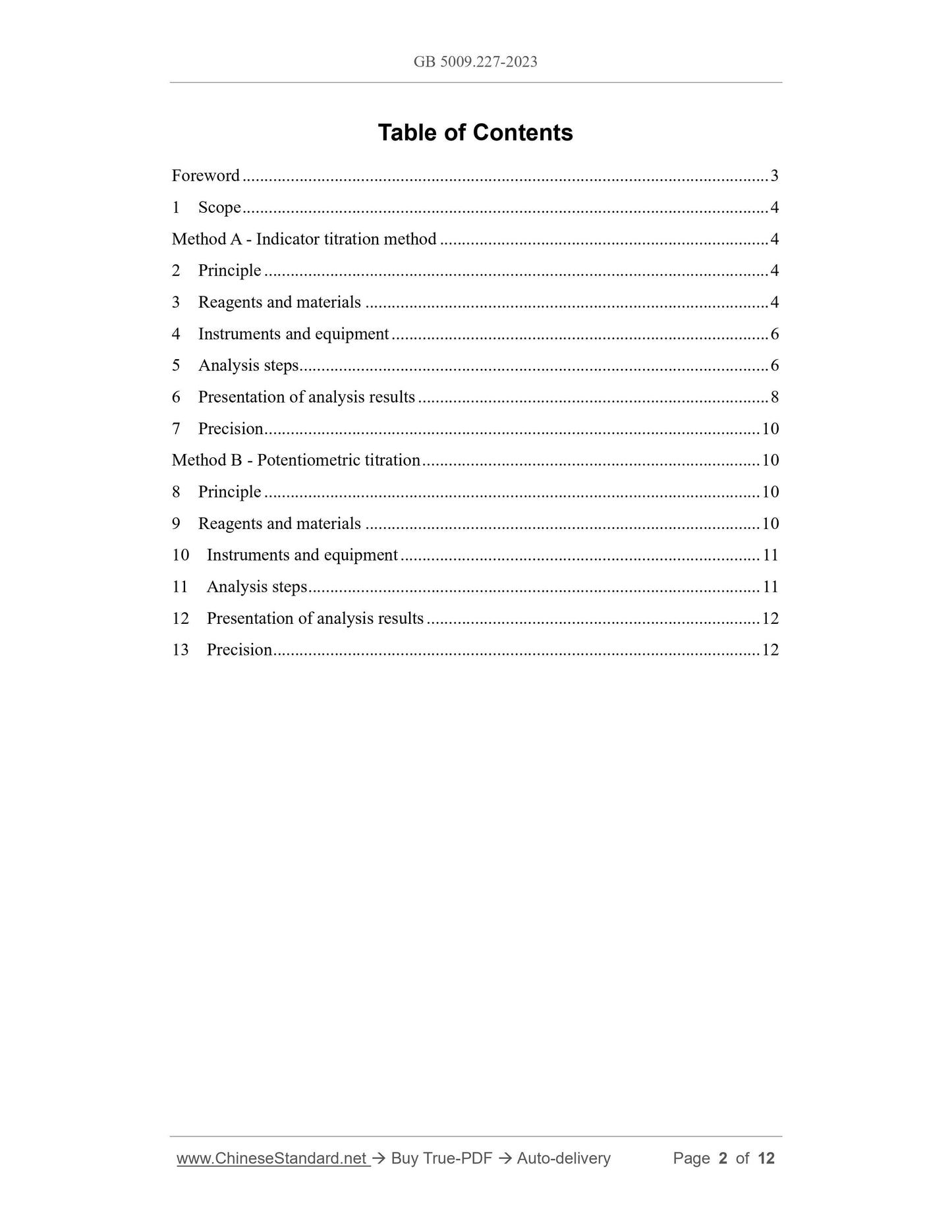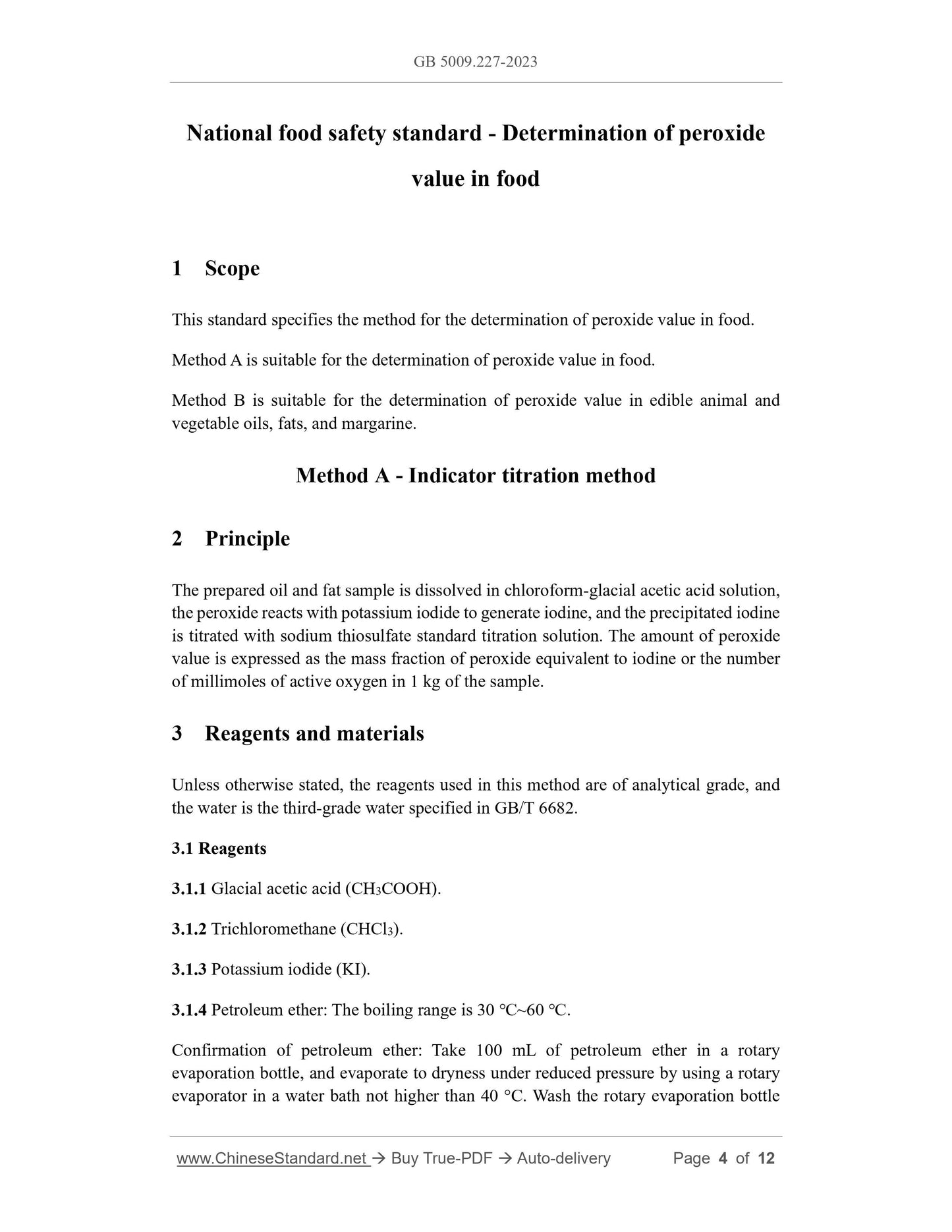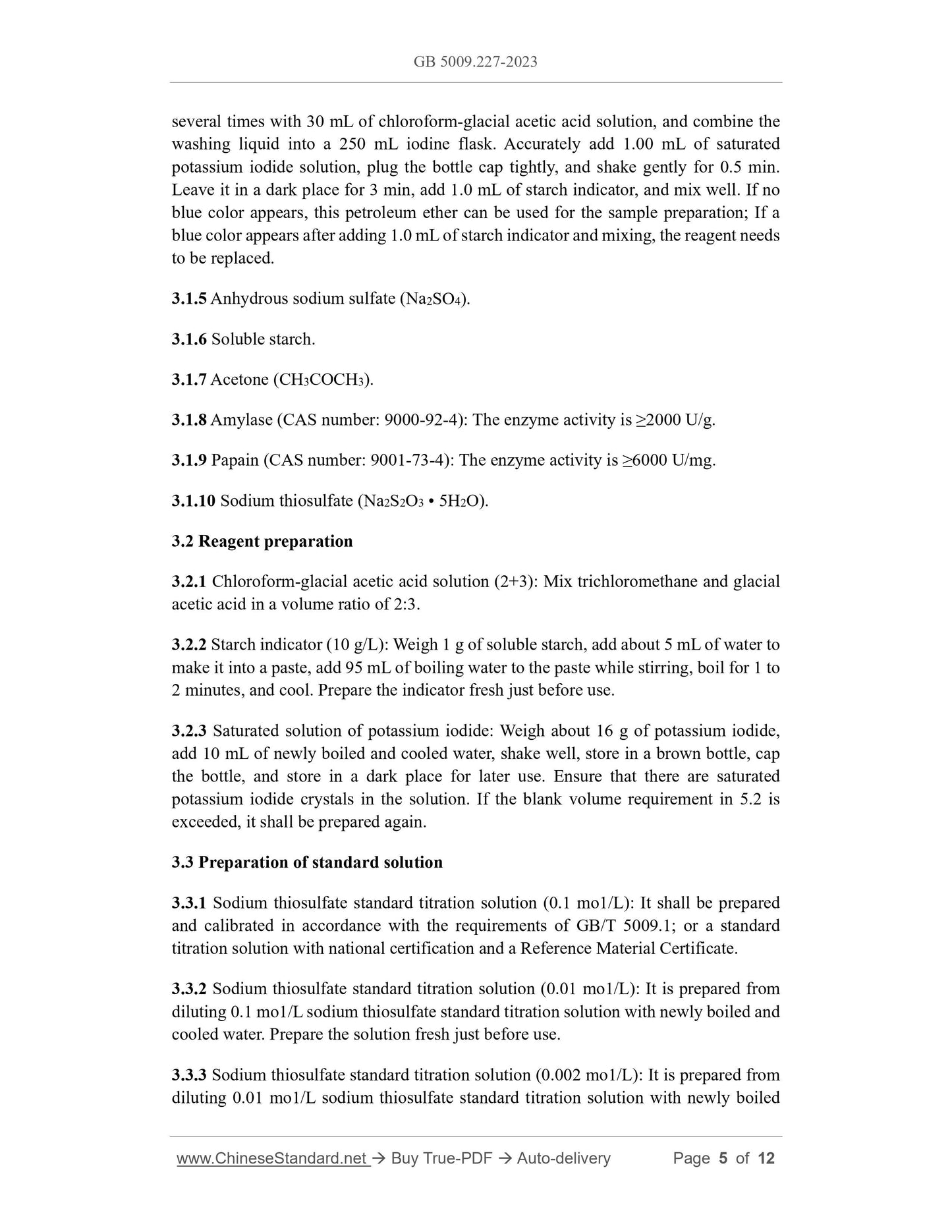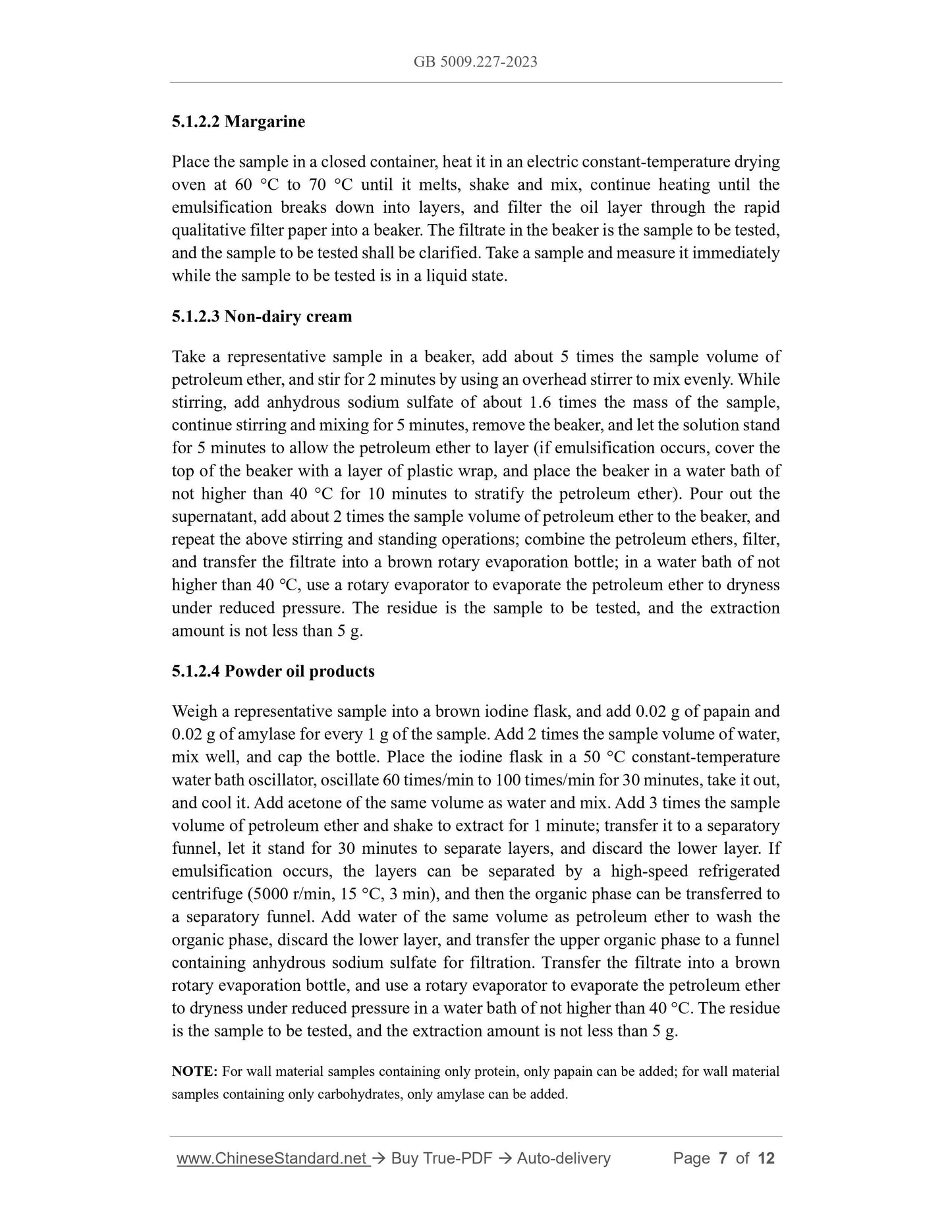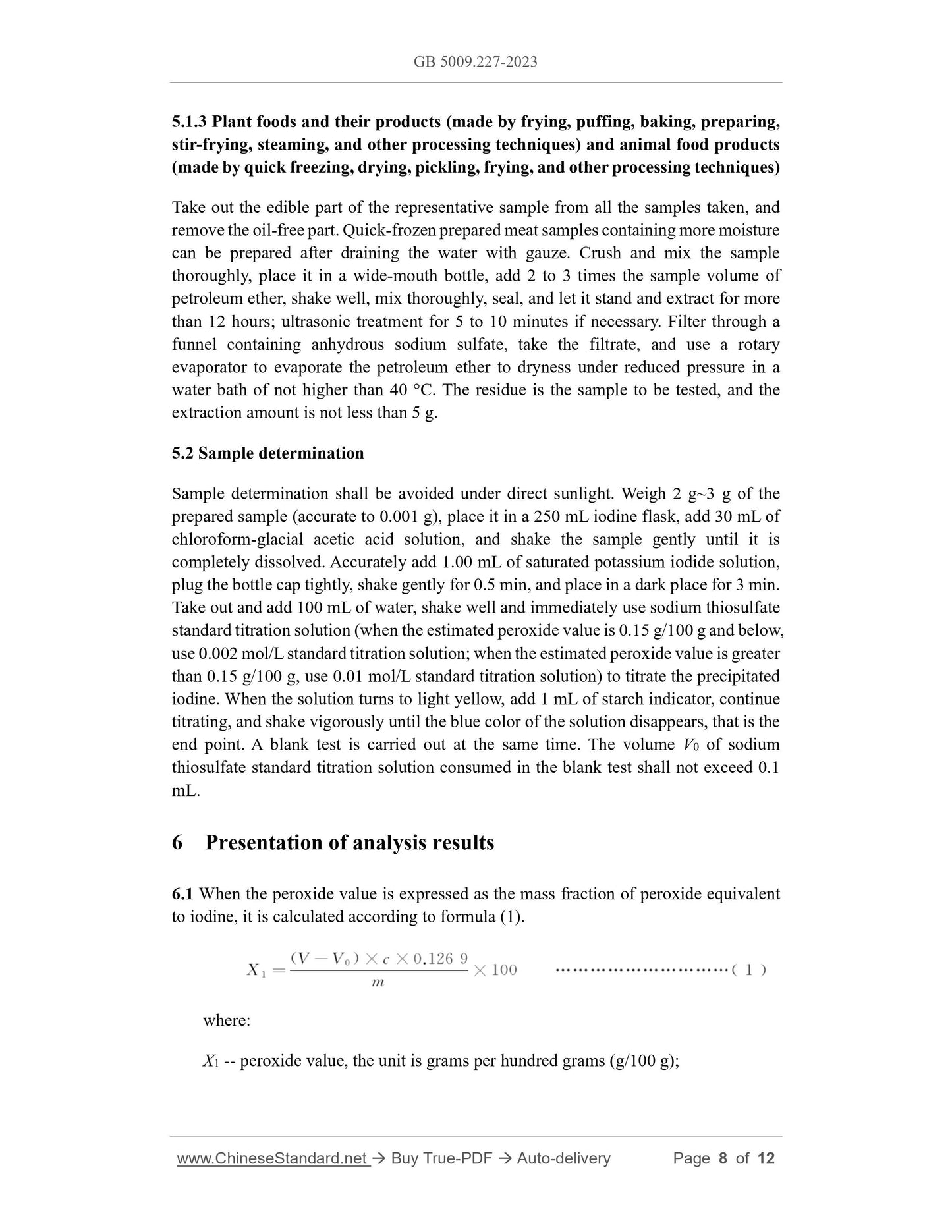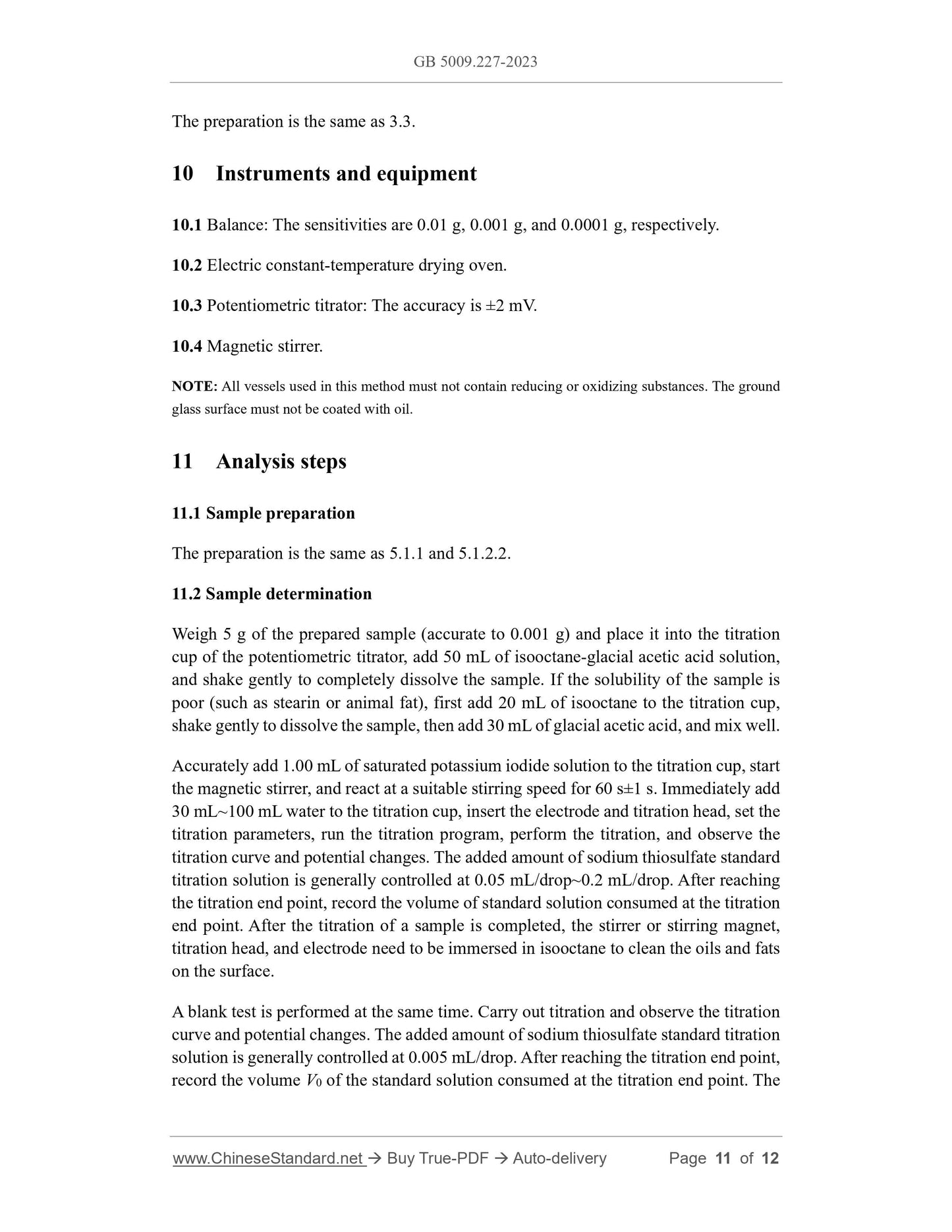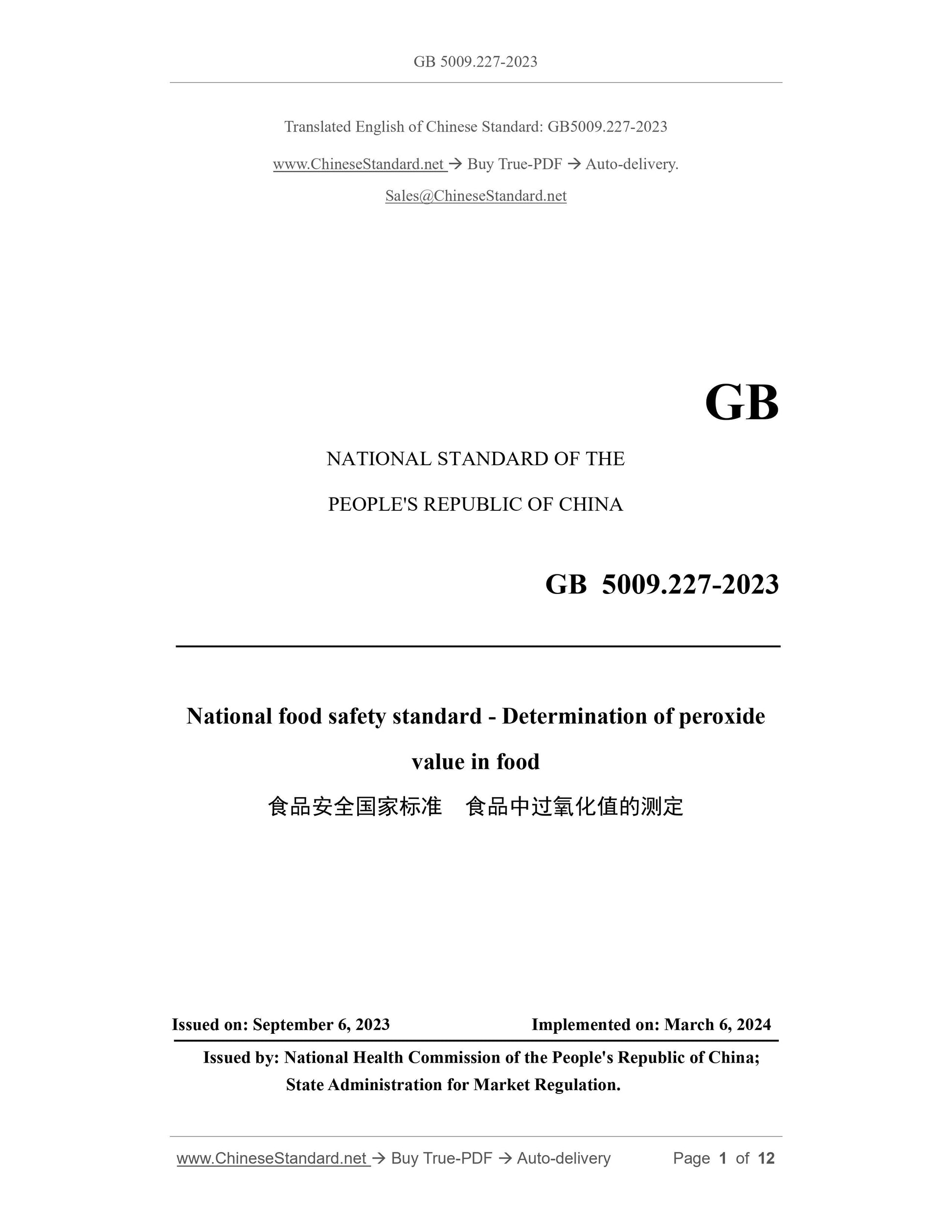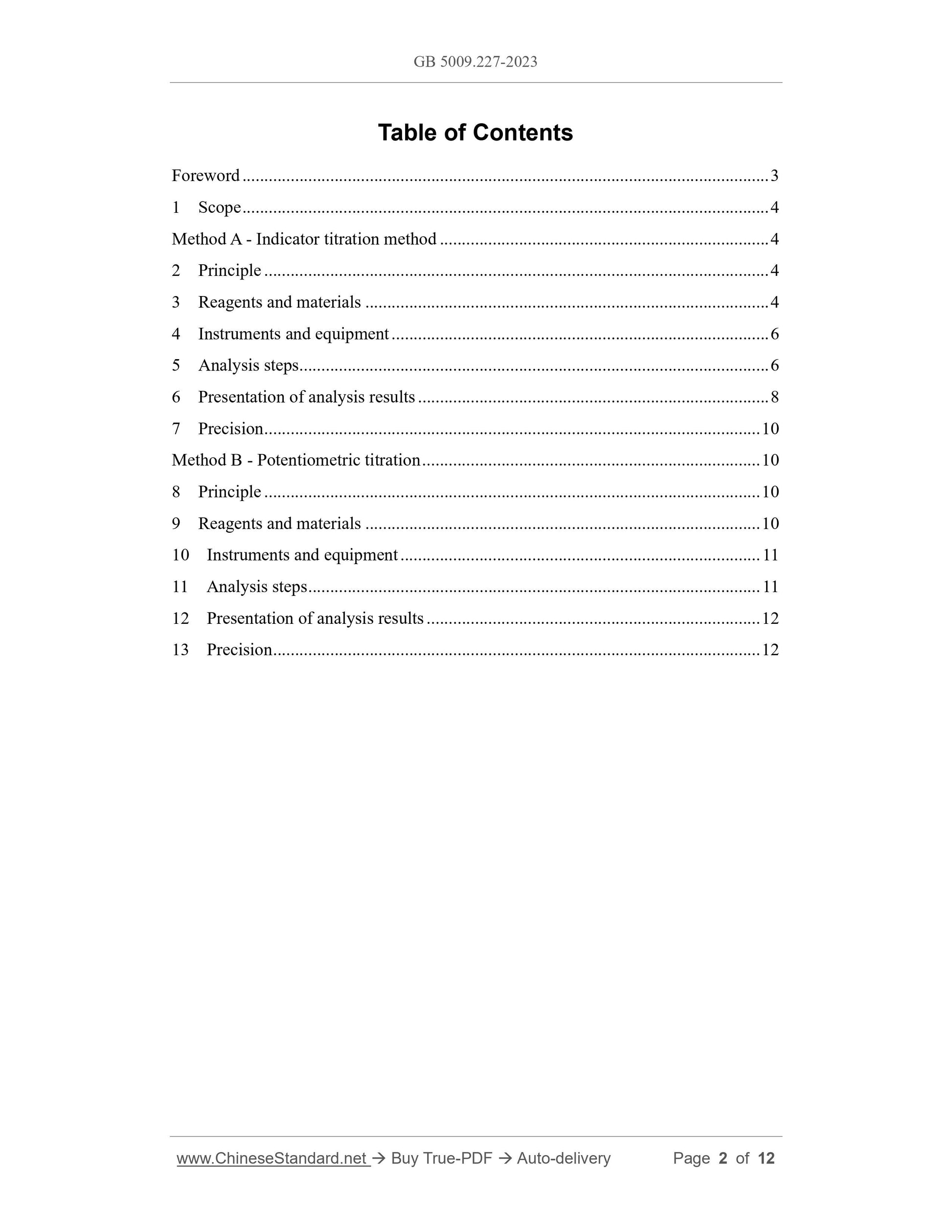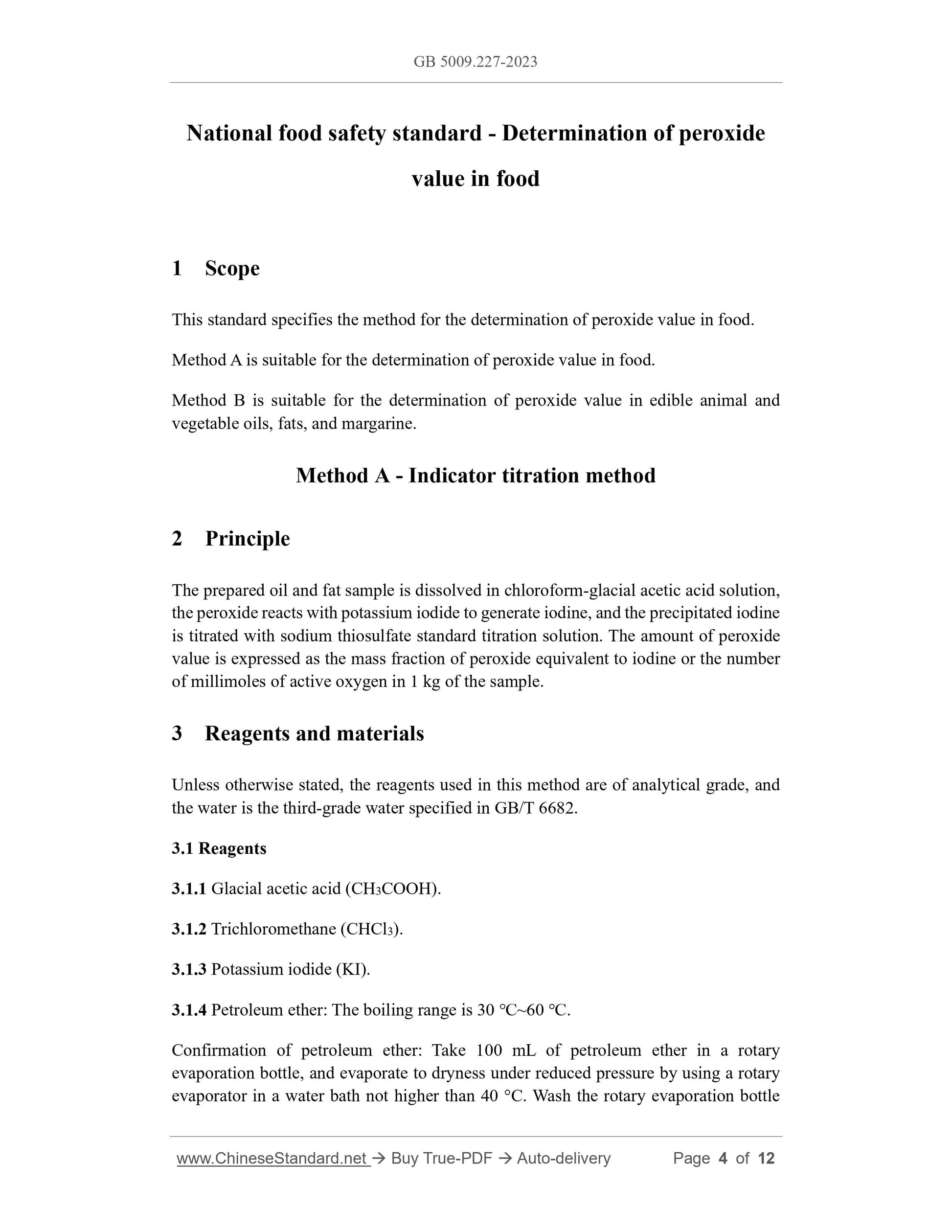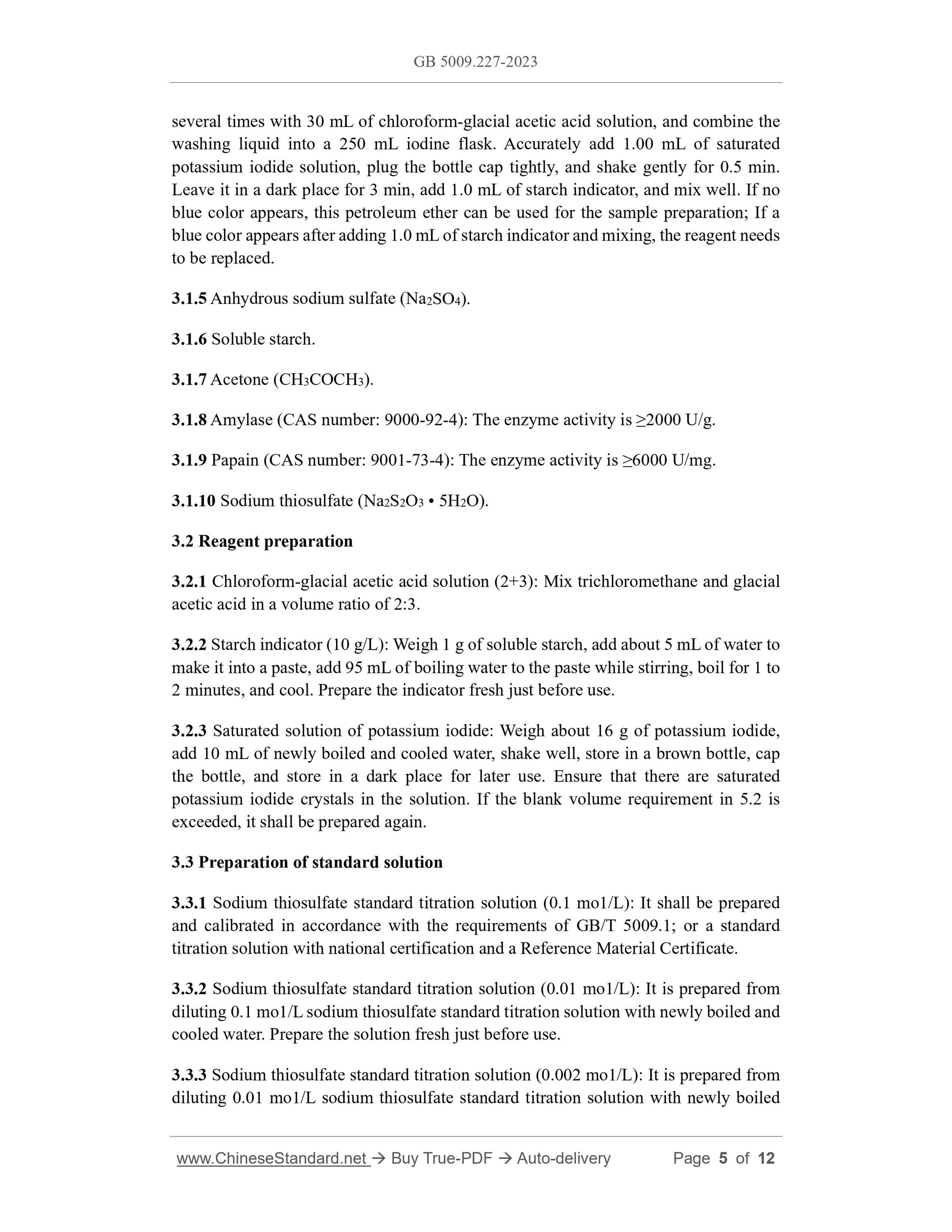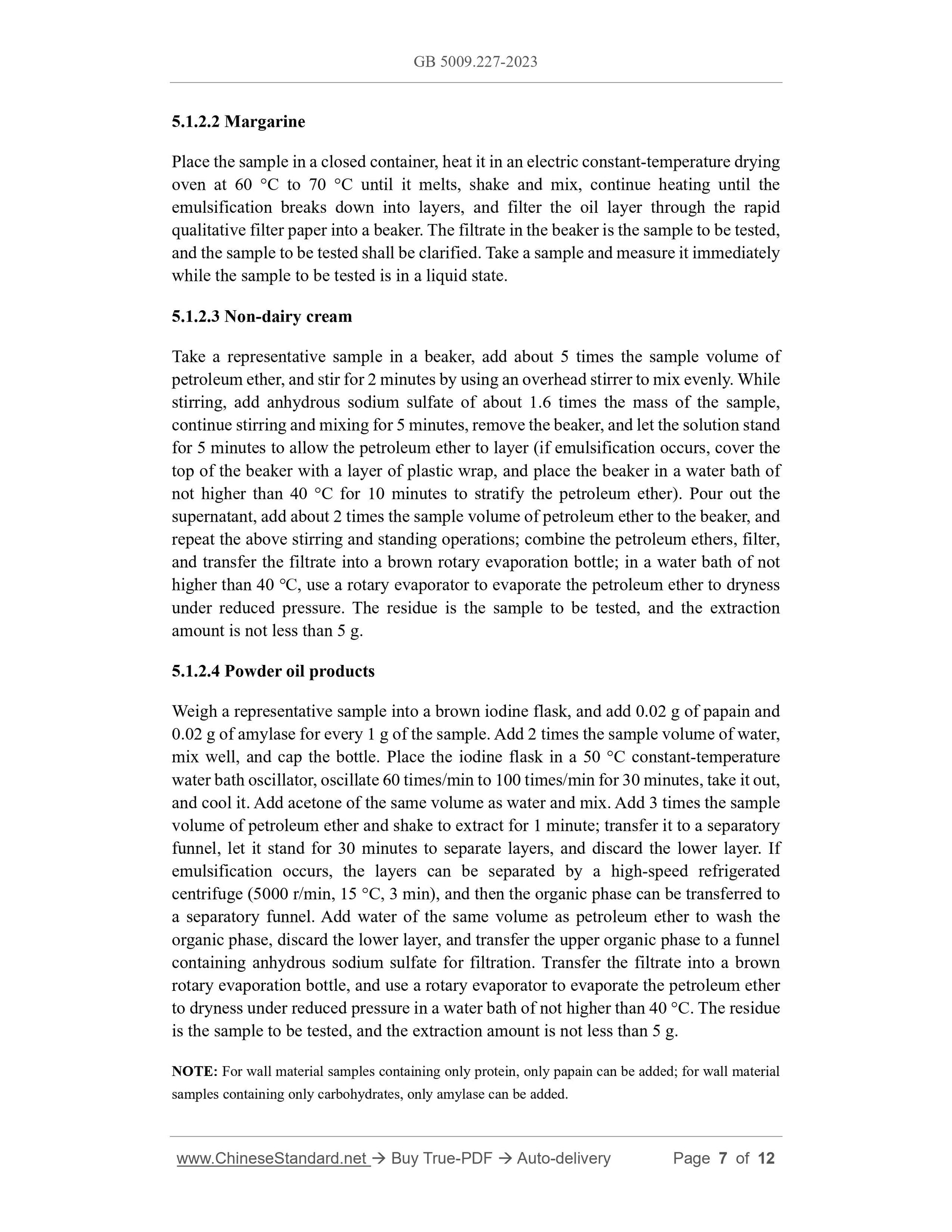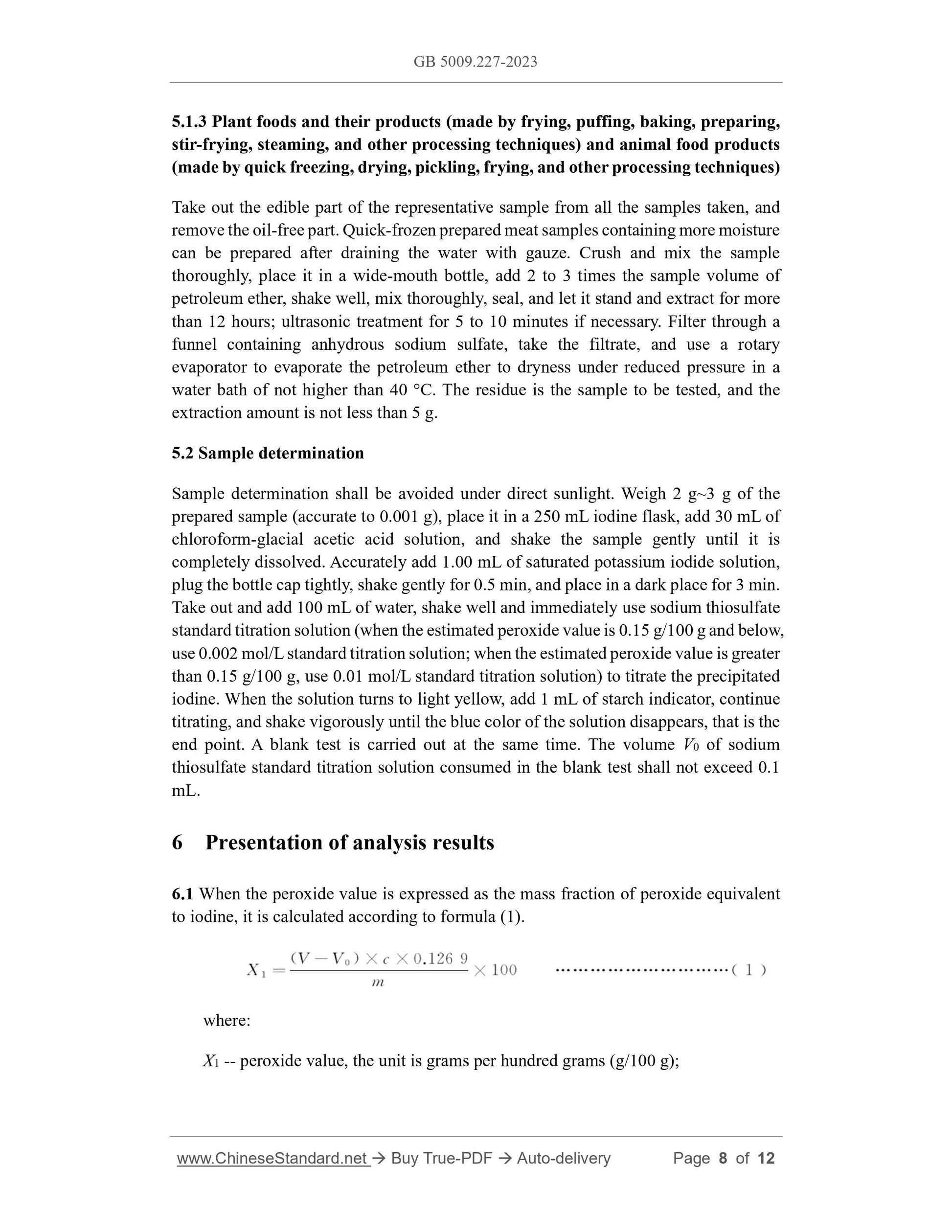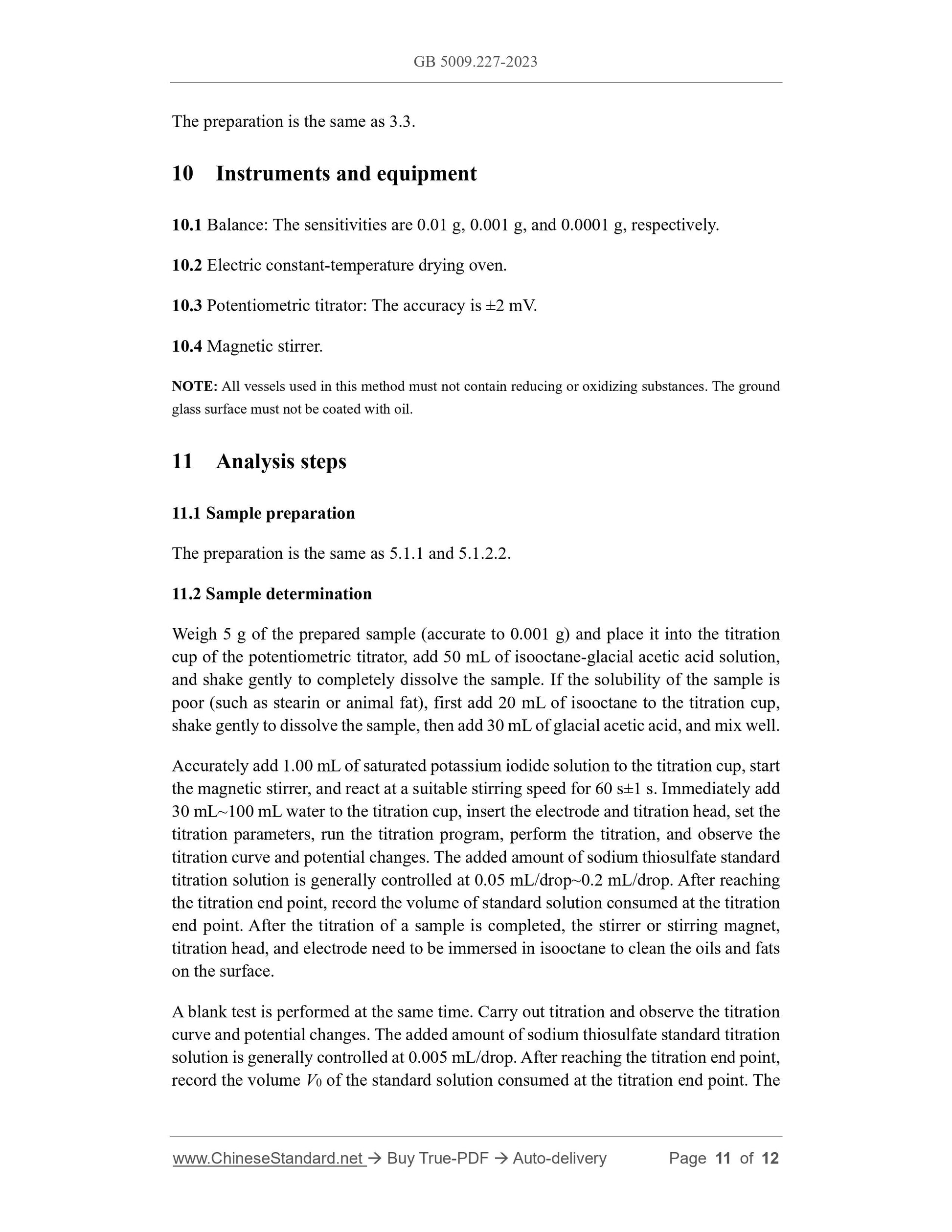1
/
of
7
www.ChineseStandard.us -- Field Test Asia Pte. Ltd.
GB 5009.227-2023 English PDF
GB 5009.227-2023 English PDF
Regular price
$155.00
Regular price
Sale price
$155.00
Unit price
/
per
Shipping calculated at checkout.
Couldn't load pickup availability
GB 5009.227-2023: National food safety standard - Determination of peroxide value in foods
Delivery: 9 seconds. Download (and Email) true-PDF + Invoice.Get Quotation: Click GB 5009.227-2023 (Self-service in 1-minute)
Newer / historical versions: GB 5009.227-2023
Preview True-PDF
Scope
This standard specifies the method for the determination of peroxide value in food.Method A is suitable for the determination of peroxide value in food.
Method B is suitable for the determination of peroxide value in edible animal and
vegetable oils, fats, and margarine.
Method A - Indicator titration method
Basic Data
| Standard ID | GB 5009.227-2023 (GB5009.227-2023) |
| Description (Translated English) | National food safety standard - Determination of synthetic colour in foods |
| Sector / Industry | National Standard |
| Classification of Chinese Standard | X09 |
| Word Count Estimation | 8,817 |
| Date of Issue | 2023-09-06 |
| Date of Implementation | 2024-03-06 |
| Issuing agency(ies) | National Health Commission of the People's Republic of China, State Administration for Market Regulation |
| Summary | This standard specifies the liquid chromatography method for the determination of synthetic colorants in food. This standard is applicable to the determination of 11 synthetic colorants (tartrazine, new red, amaranth, indigo, carmine, sunset yellow, allure red, brilliant blue, acid red, quinoline yellow and erythrosine) in food. |
Share
